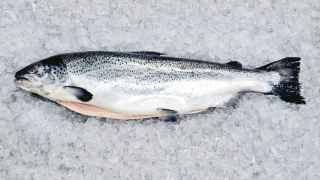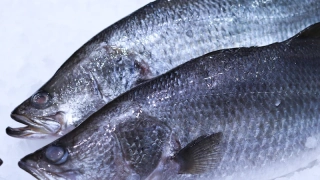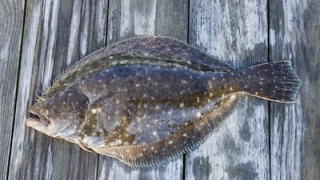Trout: Taste Profile, Aroma, Benefits and Health Risks
Trout refers to several freshwater fish species within the genera Oncorhynchus and Salmo. The most common culinary type is rainbow trout (Oncorhynchus mykiss), widely farmed worldwide, especially in North America, Europe, and Australia. Brown trout (Salmo trutta) and brook trout (Salvelinus fontinalis) are also popular. Celebrated for its delicate flavor and versatility, trout has become a staple in both traditional river cuisine and fine dining.
Trout is safe for most consumers but should be avoided by individuals with fish allergies. Mercury levels are generally low, especially in farmed rainbow trout, making it a safe choice for pregnant women and children when eaten in moderation.
What does Trout taste like?

Complete Sensory Description
-
Taste: Mild, slightly nutty, and subtly sweet; less fatty than salmon, more pronounced than cod.
-
Aroma: Fresh and clean, sometimes with a faint earthy or grassy note depending on habitat.
-
Texture: Tender, flaky, and moist; softer than salmon but firmer than tilapia.
-
Appearance: Pink to orange flesh in rainbow trout, paler in brown trout; becomes opaque when cooked.
In-depth Flavor Analysis
Trout’s flavor is shaped by its diet and environment. Farmed rainbow trout often tastes mild due to controlled feed, while wild trout may have stronger, earthier notes influenced by insects and algae. Free amino acids such as glycine and glutamic acid provide umami and subtle sweetness, while moderate lipid levels deliver a delicate richness without the heaviness of salmon. The carotenoid astaxanthin, derived from crustaceans in the diet, gives rainbow trout its pink hue and contributes to antioxidant properties. Cooking enhances natural sweetness through Maillard browning on the skin.
Varieties and Culinary Applications
-
Rainbow Trout (Oncorhynchus mykiss): Most common in markets and aquaculture, mild taste.
-
Brown Trout (Salmo trutta): Stronger, earthier flavor.
-
Brook Trout (Salvelinus fontinalis): More delicate, slightly sweeter.
Culinary uses:
-
Pan-fried whole trout with butter and herbs.
-
Baked or grilled fillets with citrus.
-
Smoked trout used in spreads and salads.
-
Poached for light, delicate dishes.
Selection and Storage
-
Flesh should be moist, firm, and brightly colored.
-
Fresh trout should smell clean, not muddy.
-
Store at 0–4°C and consume within 1–2 days.
-
Freeze at –18°C for longer storage; smoked trout preserves flavor for weeks under refrigeration.
Nutritional Insights
Trout is rich in omega-3 fatty acids, vitamin D, and protein, supporting cardiovascular and brain health. It also contains selenium and phosphorus, contributing to antioxidant defense and bone health. Farmed rainbow trout has particularly favorable nutrition due to regulated feed.

Expert Insights & Culinary Tips
Chefs highlight trout’s thin skin, which crisps beautifully when pan-fried. Its mild taste pairs well with almonds, lemon, dill, and parsley. Smoking enhances depth and makes it a versatile ingredient for appetizers. Trout should be cooked gently to preserve moisture and delicate flavor.
Interesting and Curious Facts
-
Rainbow trout was introduced from North America to rivers worldwide, including Australia, where it thrives.
-
Brown trout was brought to Australia from Europe and has established wild populations.
-
In medieval Europe, trout was reserved for nobility due to its association with clean rivers.
Harm and Dietary Considerations
-
Trout from polluted rivers may accumulate toxins; farmed trout is usually safer.
-
High-fat cooking methods (deep-frying) can reduce its health benefits.
-
People with fish allergies must avoid it.
Religious Dietary Considerations
Trout is acceptable in Islamic (halal) and Jewish (kosher, if scaled) traditions. It is widely consumed in Christian fasting traditions where fish is permitted.
Sustainability & Fishing Practices
-
Farmed rainbow trout is considered sustainable, with controlled aquaculture practices that minimize environmental impact.
-
Wild trout stocks depend heavily on local water quality and conservation programs; some wild populations are under pressure from overfishing and habitat degradation.
-
Australia’s trout fisheries are mainly recreational, with stocking programs to support populations.
-
Consumers are encouraged to choose responsibly farmed or certified trout.
Final Thoughts & Sensory Journey
Trout combines delicacy, nutrition, and versatility in one fish. Its mild, slightly nutty flavor appeals to a wide audience, while its sustainability record—especially for farmed rainbow trout—makes it a responsible modern choice.
Resources
-
FAO Fisheries and Aquaculture Report on Trout (Oncorhynchus mykiss, Salmo trutta).
-
Tacon, A. G. J., & Metian, M. (2015). Aquaculture Feed and Trout Production. Springer. ISBN 978-3319154180.
-
Kurlansky, M. (2002). Salt: A World History. Penguin. ISBN 978-0142001615.
-
Elliott, J. M. (1994). Quantitative Ecology and the Brown Trout. Oxford University Press. ISBN 978-0198546786.
-
Gjedrem, T. (2010). The Genetics and Breeding of Aquatic Animals. Wiley-Blackwell. ISBN 978-1405155990.











